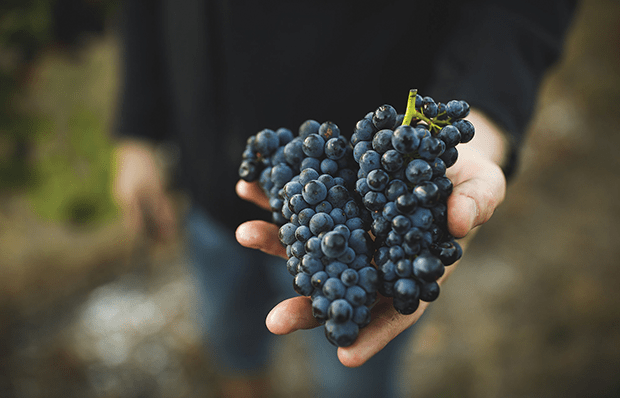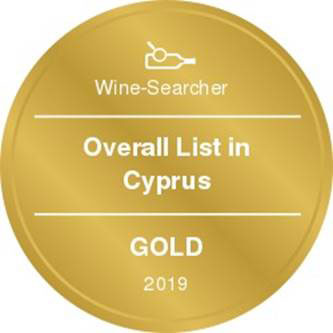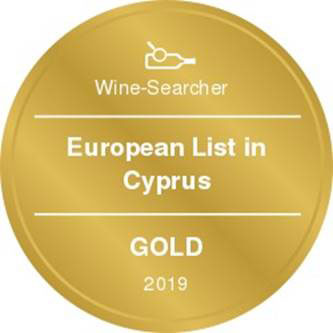DOMAINE COSTE CAUMARTIN POMMARD 1ER CRU LES FREMIERS 2018
Country: France, Bourgogne, Côte de Beaune, Pommard
Grape Varieties: Pinot Noir 100%
Grape Varieties: Pinot Noir 100%
Age of vines: 43 years
Location: in the first part of the hill, South of Pommard, close to Volnay.
Vinification and Ageing: The grapes are 100% destemmed followed by a pre-fermentation maceration for 3 to 6 days at 13°C. Vinified in stainless steel or concrete tanks, with punching of the cap and pumping over adjusted to daily tasting, the fermentation lasts between 2 and 3 weeks at a maximum temperature of 33/34°C. The malolactic fermentation takes place during the 12 months of ageing in oak barrels, of which 10 to 15 % in new oak barrels.
Tasting Note: The characteristic of this wine is this attack, quite firm and solid, that lines the mouth, bringing out very fine tannins wrapped with pretty fruits. The whole, blossoms into a beautiful amplitude that makes the finale particularly persistent. Year after year, we find this characteristic: this alliance of the power expressed at the beginning of the mouth and the elegance of fruits and tannins.
Cellaring: A minimum of 6 years of ageing in the bottle is recommended, given that the apogee of this wine is usually between 8 and 12 years, or even more in certain years.
Food Pairing: Grilled beef ribs accompanied by a pepper sauce. Lamb or poultry stew, venison "Grand Veneur", mountain charcuterie, game animals, braised or roasted. Cheeses such as Epoisses, Cîteaux, Langres, Soumaintrain, Amour-de-Nuits, Livarot, Pont-l’Evêque. Without forgetting the desserts made with dark chocolate.
Serving temperature: It is recommended to open the bottle 2 to 4 hours before the meal and to serve the wine at a temperature of 15-17°C
The history of the Domaine dates back to the time of the Great Dukes of Burgundy. (1000-1400) The place represented a whole neighbourhood of Pommard. The origin of the current buildings dates back to 1610 up to 1641 the date of the well of the family. In 1793 the Domaine entered in Coste-Caumartin family thanks to the wedding of Antoine Coste. The family was reputed for its activity as ironmasters. Since then, the Domaine was already highly award-winning, including the gold medal at the Paris world-Wide Fair in 1900. The Domaine was managed by the women of the family, the Coste, Debrois, Chenot and then the Sordet families succeeding one another till now. The Sordet family is the last family who took over the Domaine. Jerome Sordet runs the vineyards from 1988 and quickly diversify and extends the vineyards from 9 to 12 hectares. In the period 1988 - 1995 acquires two more appellations Saint Romaine and Beaune 1er Cru and builds a cellar and vat room 400m² to improve, modernize and increase production. From 2014 at the Domaine has settled Benoit Sordet, who managed to improve quite the operation of the Domaine. Domaine produces 65.000 bottles per year, 25% white and 75% red wine.
Location: in the first part of the hill, South of Pommard, close to Volnay.
Vinification and Ageing: The grapes are 100% destemmed followed by a pre-fermentation maceration for 3 to 6 days at 13°C. Vinified in stainless steel or concrete tanks, with punching of the cap and pumping over adjusted to daily tasting, the fermentation lasts between 2 and 3 weeks at a maximum temperature of 33/34°C. The malolactic fermentation takes place during the 12 months of ageing in oak barrels, of which 10 to 15 % in new oak barrels.
Tasting Note: The characteristic of this wine is this attack, quite firm and solid, that lines the mouth, bringing out very fine tannins wrapped with pretty fruits. The whole, blossoms into a beautiful amplitude that makes the finale particularly persistent. Year after year, we find this characteristic: this alliance of the power expressed at the beginning of the mouth and the elegance of fruits and tannins.
Cellaring: A minimum of 6 years of ageing in the bottle is recommended, given that the apogee of this wine is usually between 8 and 12 years, or even more in certain years.
Food Pairing: Grilled beef ribs accompanied by a pepper sauce. Lamb or poultry stew, venison "Grand Veneur", mountain charcuterie, game animals, braised or roasted. Cheeses such as Epoisses, Cîteaux, Langres, Soumaintrain, Amour-de-Nuits, Livarot, Pont-l’Evêque. Without forgetting the desserts made with dark chocolate.
Serving temperature: It is recommended to open the bottle 2 to 4 hours before the meal and to serve the wine at a temperature of 15-17°C
The history of the Domaine dates back to the time of the Great Dukes of Burgundy. (1000-1400) The place represented a whole neighbourhood of Pommard. The origin of the current buildings dates back to 1610 up to 1641 the date of the well of the family. In 1793 the Domaine entered in Coste-Caumartin family thanks to the wedding of Antoine Coste. The family was reputed for its activity as ironmasters. Since then, the Domaine was already highly award-winning, including the gold medal at the Paris world-Wide Fair in 1900. The Domaine was managed by the women of the family, the Coste, Debrois, Chenot and then the Sordet families succeeding one another till now. The Sordet family is the last family who took over the Domaine. Jerome Sordet runs the vineyards from 1988 and quickly diversify and extends the vineyards from 9 to 12 hectares. In the period 1988 - 1995 acquires two more appellations Saint Romaine and Beaune 1er Cru and builds a cellar and vat room 400m² to improve, modernize and increase production. From 2014 at the Domaine has settled Benoit Sordet, who managed to improve quite the operation of the Domaine. Domaine produces 65.000 bottles per year, 25% white and 75% red wine.
Product Id: 0532

For orders €100,00 and above we deliver free to your place
For orders below €100,00 delivery charge €10,00 within city limits
For orders below €100,00 delivery charge €10,00 within city limits

Pinot Noir
Pinot Noir is probably the most frustrating, and at times infuriating, wine grape in the world. However when it is successful, it can produce some of the most sublime wines known to man. This thin-skinned grape which grows in small, tight bunches performs well on well-drained, deepish limestone based subsoils as are found on Burgundy`s Côte d`Or.
Pinot Noir is more susceptible than other varieties to over cropping - concentration and varietal character disappear rapidly if yields are excessive and yields as little as 25hl/ha are the norm for some climates of the Côte d`Or.
Because of the thinness of the skins, Pinot Noir wines are lighter in colour, body and tannins. However the best wines have grip, complexity and an intensity of fruit seldom found in wine from other grapes. Young Pinot Noir can smell almost sweet, redolent with freshly crushed raspberries, cherries and redcurrants. When mature, the best wines develop a sensuous, silky mouth feel with the fruit flavours deepening and gamey "sous-bois" nuances emerging.
The best examples are still found in Burgundy, although Pinot Noir`s key role in Champagne should not be forgotten. It is grown throughout the world with notable success in the Carneros and Russian River Valley districts of California, and the Martinborough and Central Otago regions of New Zealand.
Pinot Noir is more susceptible than other varieties to over cropping - concentration and varietal character disappear rapidly if yields are excessive and yields as little as 25hl/ha are the norm for some climates of the Côte d`Or.
Because of the thinness of the skins, Pinot Noir wines are lighter in colour, body and tannins. However the best wines have grip, complexity and an intensity of fruit seldom found in wine from other grapes. Young Pinot Noir can smell almost sweet, redolent with freshly crushed raspberries, cherries and redcurrants. When mature, the best wines develop a sensuous, silky mouth feel with the fruit flavours deepening and gamey "sous-bois" nuances emerging.
The best examples are still found in Burgundy, although Pinot Noir`s key role in Champagne should not be forgotten. It is grown throughout the world with notable success in the Carneros and Russian River Valley districts of California, and the Martinborough and Central Otago regions of New Zealand.
 +357 25 76 06 08
+357 25 76 06 08














